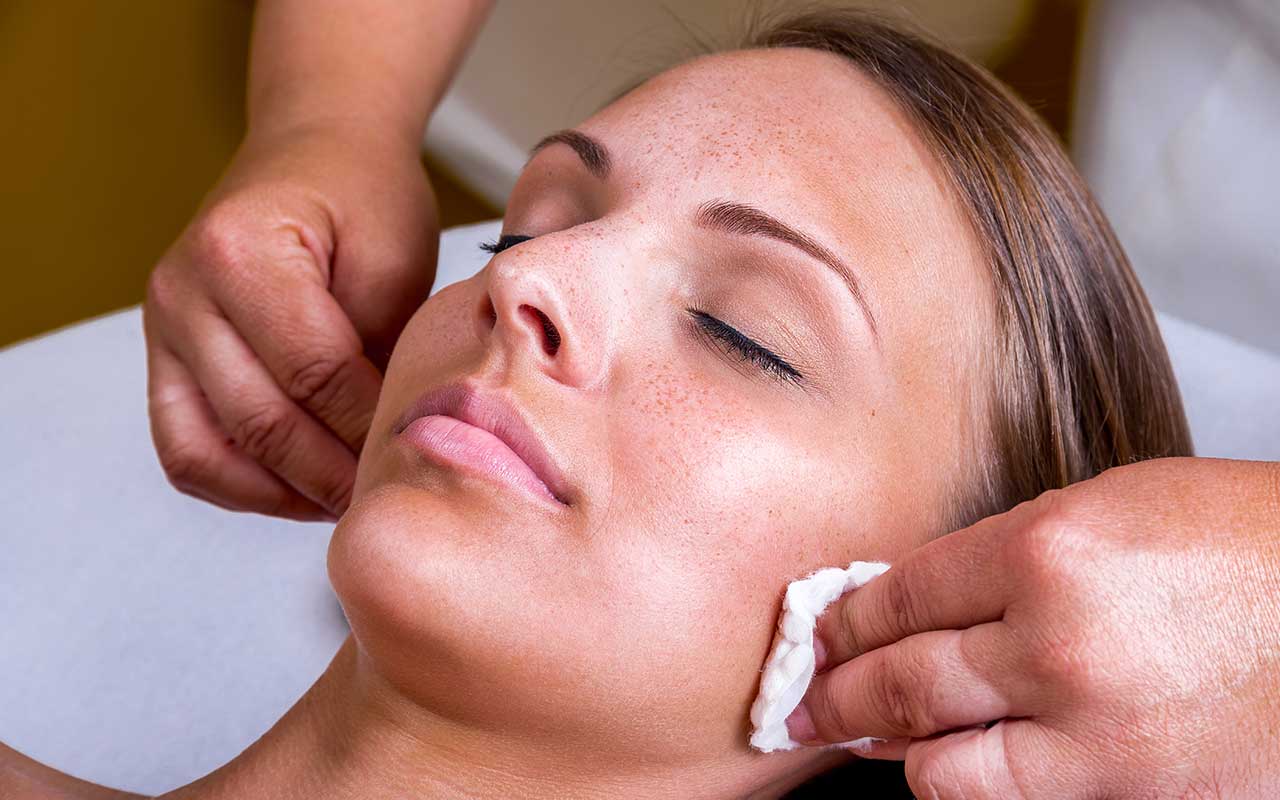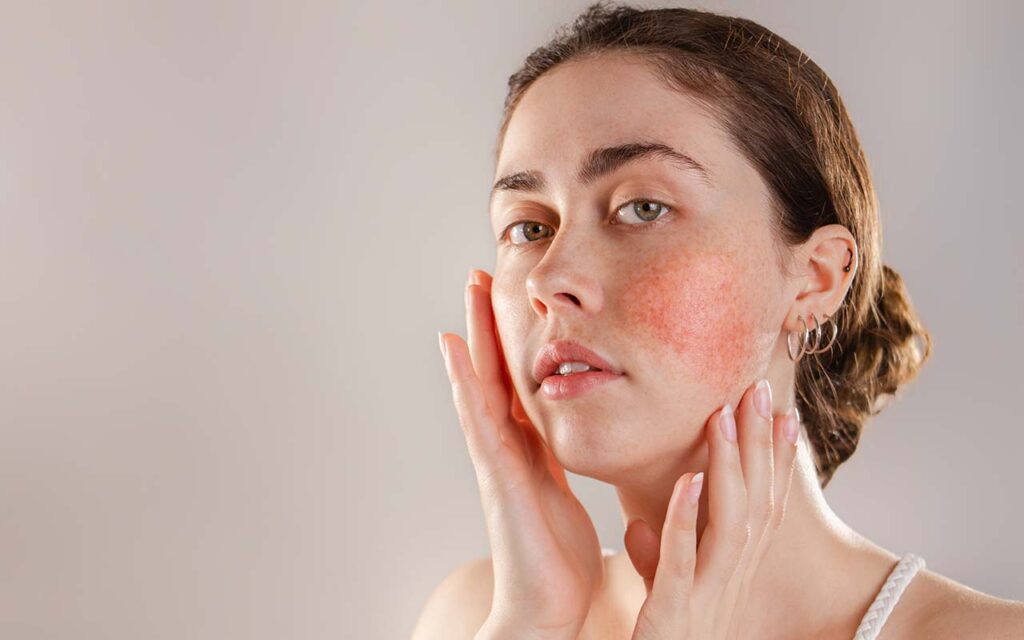The decorations are down and Christmas is done for another year. Whether you overindulged over the festive season or not, the New Year is a popular time for taking a look at how you want to live your life in the coming months. And what better place to start than with your skin.
Great skin and hair are an important part of how you feel about yourself. At Vale Laser Clinic we make sure our clients have glowing, radiant skin by offering a range of chemical peel treatments.
All our peels are by AlumierMD and can be used to treat a range of different skin conditions – many of which tend to flare up with the harsh winter winds and cold weather.
How does a chemical peel work?
Chemical peels use acids to exfoliate the skin. But don’t be alarmed, these acids are specially formulated to remove just enough of the skin so that the damaged cells are removed. This allows the ‘good’ unblemished skin underneath to come to the surface.
The acid works by lowering the pH of the skin which, in turn, loosens the dead skin cells, improving exfoliation and stimulating new cell growth.
The parts of the skin affected by a peel are the epidermis (the outer layer) and the dermis (the deeper layer where the nerve endings, hair follicles and sweat glands lie). A light to medium peel will remove the top layers of the epidermis. In some cases, a stronger medical peel will also take away a small section of the dermis too.

Who are chemical peels good for?
Anyone can benefit from the skin brightening and rejuvenating effects of a chemical peel, since it will improve both the texture and tone of the skin.
But peels can also be used to treat and improve specific skin conditions. These include: acne, rosacea, scarring, enlarged pores and hyperpigmentation. In the case of acne, a medium-deep peel would be required while hyperpigmentation requires a deep peel.
How many sessions an individual requires depends on the extent of the initial skin damage and what type of peel they have in the first place. Acne can take up to eight weeks before there are significant results. A standard peel provides instant results; it can be a one-off treat or repeated every two to five weeks. The bonus with regular peels is that your skin adapts to the process and learns to rejuvenate itself.
Tips on having a chemical peel
- Afterwards you must apply an SPF cream or sunscreen on a daily basis to protect the new skin layer from the sun
- Expect some ‘downtime’ after a deep peel
- Pre-treatment solutions can accelerate results of the peel
- Post-treatment skins and balms will soothe the skin
Get in touch today
If you are considering a peel and haven’t experienced one before then do come into the salon in St Athan Village, near Cardiff for a consultation and skin care advice with one of our skin therapists.
Alternatively, we also provide online consultations. We can answer all your questions and discuss the various Alumier peels that we offer. Make 2022 the year of great skin. Contact us on 01446 750 880 or via email: Skin@valelaserclinic.co.uk.




